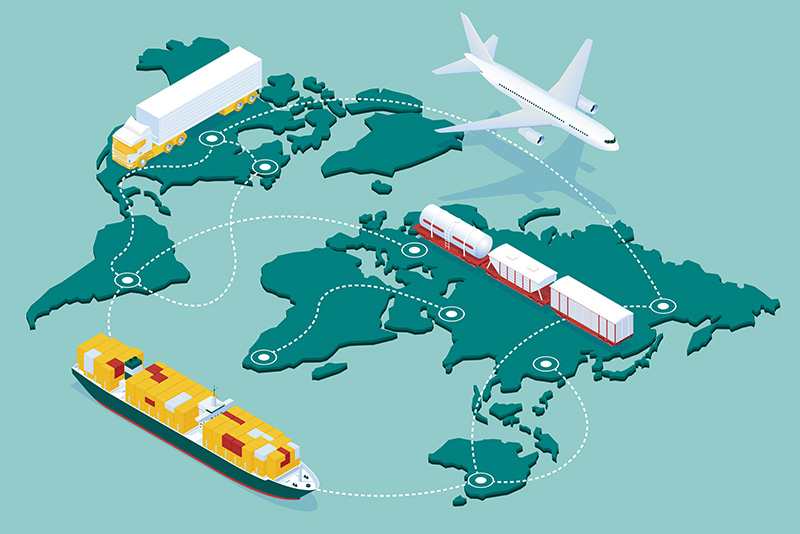It’s no secret that global political tensions have not been as volatile in this current generation. Without trade diversity, many key Australian industries are counting the cost of deteriorating relations.
Australia is a primary product exporting nation, with a continuous need for foreign investment. As of July 2020, 55.5% of our trade is concentrated in four key markets – the United States, South Korea, Japan, and of course China. The latter accumulating a whopping 33% of our export trade. Australia has benefited enormously from the rapid increase in urbanisation of China in the past 30 years.
In the event that this golden goose was to stop laying, what would happen? Whether we like it or not, relations between Australia and China are quickly deteriorating and businesses must be able to adapt with a workable “Plan B”.

The Trade Relationship Between Australia And China
China’s economic growth since the 1970’s has been nothing short of astronomical. It has entailed urbanisation, growth in manufacturing, and investment in infrastructure – which created an unprecedented demand for building materials, energy for electricity and transport, and raw materials for manufacturing.
The good news for us and our resources sector was that few other countries had Australia’s huge supplies of iron ore and quality coking coal. These materials are relatively close to sea transport and easily exploited. Our proximity to China for shipping minerals of which transport costs are up to 10% of the cost, makes our minerals very attractive compared to competitors.
So what do we have that China wants? Key figures to reflect what we are exporting to China include:
- Iron Ore – $79.48 billion
- Coal – $13.84 billion
- Natural Gas – $16.16 billion
- Gold – $2.99 billion
- Beef – $2.67 billion
However, the handling of the Covid-19 pandemic has seen China flex its muscles as a rising global superpower. Like many other countries that have strong trade relations with China, the Australian government is attempting to walk the fine line between our own national interests and keeping the income rolling in. So where did it all go wrong?
It would appear that China was less than impressed with Australia being at the forefront in pushing for a global enquiry into the origins of the coronavirus. Although we’re not the only country that they’re “annoyed” with, we’ve taken more than a few hits in recent months via “economic retaliation”. While these have included steep tariffs slapped on Australian barley, beef and wine exports, economists fear that this is just a preview of what’s to come in terms of a decline in trade relations.
What’s The Alternative?
If we have put all of our eggs into one economic basket, what’s to be done when that basket is dropped and the eggs crack? The solution lies in better egg division. Australia must diversify our trade opportunities to minimise risk and potential narrow exposure if and when things go south with our largest customer.
By large, we’ve taken the easy route and ignored the other trade opportunities that can be found within our other neighbours – think South Korea, India, Indonesia, Thailand, Singapore and Vietnam. These nations generally buy the same commodities that China does, albeit at a lower volume. By paying attention to these stable and developing economies, in particular Vietnam and India, we will minimise our trade reliance on China and protect national interests at the same time.
An opportunity for Australian miners and manufacturers lies within the renewable energy space. While we mine most of the battery minerals here in the Land Down Under, we sell them raw to Chinese customers. There is an age-old belief that Australia is only a primary producer, with little to no manufacturing capability. Ultimately – this way of thinking has, and continues, to hold us back. The opportunity exists to regenerate our manufacturing capability, to produce high value products, such as batteries or semi complete battery components. An integrated supply chain and commercial market is required to achieve this. Our relationship with Korea and Malaysia will be of prime significance here.
How To Prepare your Business Trade and Income Diversity
With the current geopolitical friction between China and the West, there is a genuine and pressing need for companies to reconsider their customer exposure. Those heavily weighted to Chinese buyers need to consider the impact of a sudden halt in trading, due to political actions.
Diversification of customers is a sound risk-management approach that will involve research, marketing, sales and possibly government assistance. It may also require revision of your current capital and operational expenditure. As we’re in a recession at present, there are some market forces that do work in your favour, should you need to invest in new plant, equipment or assets. Now may be the right time to seek out some external assistance.
In a perfect world, capital is invested to acquire new, improved, or additional assets for expansion, new product manufacture, increase efficiency to add greater value to the existing business. Although the actual inclusions may vary depending on your industry – one way or another, capital needs to be employed as an investment to increase a company’s profit over the course of trading. Identification of the most beneficial investment opportunity for growth of your business is a key management activity.
Peter Crane has spent thirty years working with Tier One operating companies, assisting them deliver efficient capital investments, reducing waste, improving their performance and increasing investor confidence. Armed with practical experience in engineering services, capital planning, project delivery, construction management and strategic asset management within the infrastructure and resources sector, Peter offers a unique insight into operational roadblocks – and how to fix them.
If you are interested in understanding how the capital investment lifecycle model works, then why not schedule a discovery call with Peter and the team at SER Solutions today?

